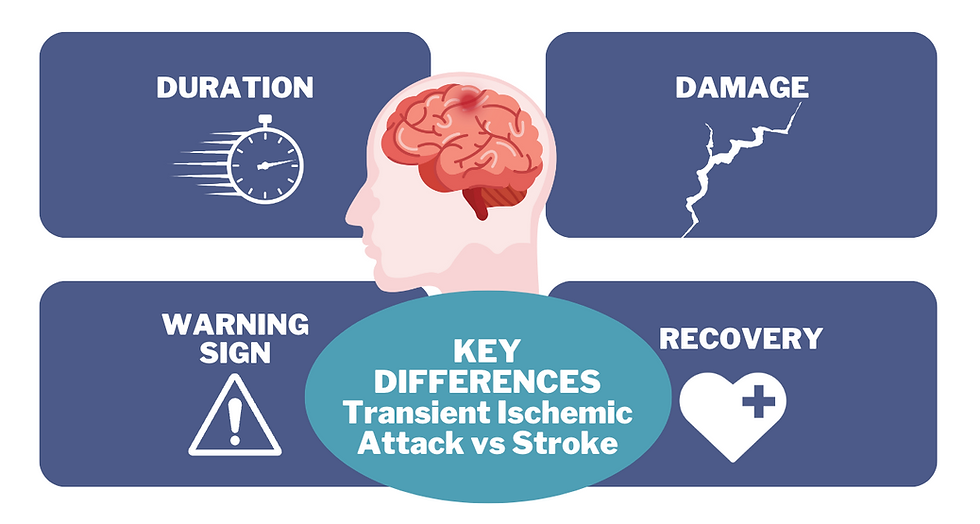Post Stroke Pain... What Can I Do To Manage It?
- Lenis Phoa

- Dec 5, 2023
- 3 min read
Updated: May 21
Recovering from a stroke can be an overwhelming journey, and for many stroke survivors, managing pain is a significant part of that journey. Post-stroke pain (PSP) can manifest in various forms, such as muscle stiffness, joint discomfort, or even nerve pain, making everyday tasks challenging. Understanding and addressing this pain is crucial for a more successful and comfortable recovery.

What is Post-Stroke Pain (PSP)?
Post-stroke pain often arises from the damage to nerves and muscles during the stroke. For some, this pain may be mild, while others experience more severe discomfort that can affect their mobility and overall quality of life. A common type of PSP is Central Post-Stroke Pain (CPSP), a form of neuropathic pain caused by damage to the brain’s pain pathways. However, other types of PSP, such as shoulder pain, joint pain, and muscle tightness, are equally prevalent.
To manage your symptoms, your doctor may prescribe various treatments, for example, pain relief medications and physiotherapy.
Why Addressing Post-Stroke Pain Early is Key
Proper pain management is essential for stroke survivors to participate in rehabilitation, which is a cornerstone of recovery. Early intervention can help prevent pain from becoming chronic and ensure that you maintain or improve your mobility.
How Physiotherapy Can Help
Physiotherapy is one of the most effective treatments for managing post-stroke pain. It can help manage post-stroke pain through the following steps:
1. Evaluation: Prior to any treatment, thorough assessment is required to gain a better understanding of the symptom(s). This will also give insight on its impact on mobility and daily activities. The assessment may involve evaluation of physical parameters, including muscle strength, tone, joint range of motion, and posture.
2. Tailored Exercise Program: Individualised exercise programs can manage pain, through exercises that focus on improving strength, flexibility, and coordination. These exercises can help alleviate pain, restore function, and enhance overall mobility.
3. Education and Self-Management: There are many pain management techniques that can be used, including proper body mechanics, postural correction, and relaxation exercises. The use of adaptive devices or assistive equipment that can make daily activities more manageable may also be recommended.
4. Manual techniques: In addition to exercises, manual techniques such as stretching, joint mobilisation or tissue release may be utilised to target specific areas of pain or stiffness. These techniques can help reduce muscle tension, improve circulation, and relieve pain.
5. Modalities: On top of active exercises, modalities to manage pain, such as heat or cold therapy, ultrasound, electrical stimulation, or TENS (transcutaneous electrical nerve stimulation) may be utilised. These modalities can provide pain relief, reduce inflammation, and promote healing.
6. Lifestyle Modifications: Lifestyle changes, such as maintaining a healthy weight, engaging in regular physical activity, and managing stress, are also important factors that can influence post-stroke pain. Other options include using orthotics like the ankle-foot orthosis to support the foot better in walking, and reduce the risk of developing secondary complications that can contribute to pain.
It's important to note that each individual's experience with post-stroke pain is unique, and the physiotherapy approach may vary based on specific needs. Therefore, it is crucial to consult with a qualified physiotherapist who can provide appropriate guidance and develop a tailored treatment plan to address your post-stroke pain and help you regain function and quality of life.
At Thrive Healthcare, we specialise in personalised stroke rehabilitation programs that address pain management, mobility, and overall recovery. If you or a loved one is struggling with post-stroke pain, getting the right care early on can make a significant difference in your recovery journey. If you know someone in need of rehabilitation post-stroke, drop us an email today.
For more information on stroke and rehabilitation, check out our resource on neurological rehabilitation here.




Comments